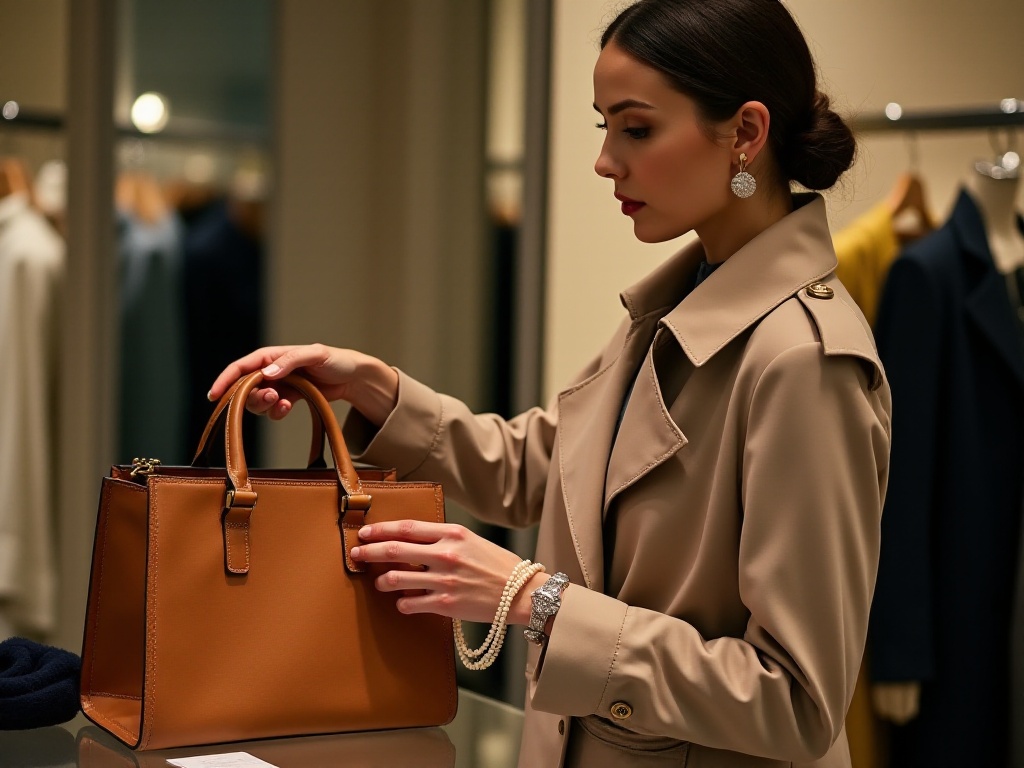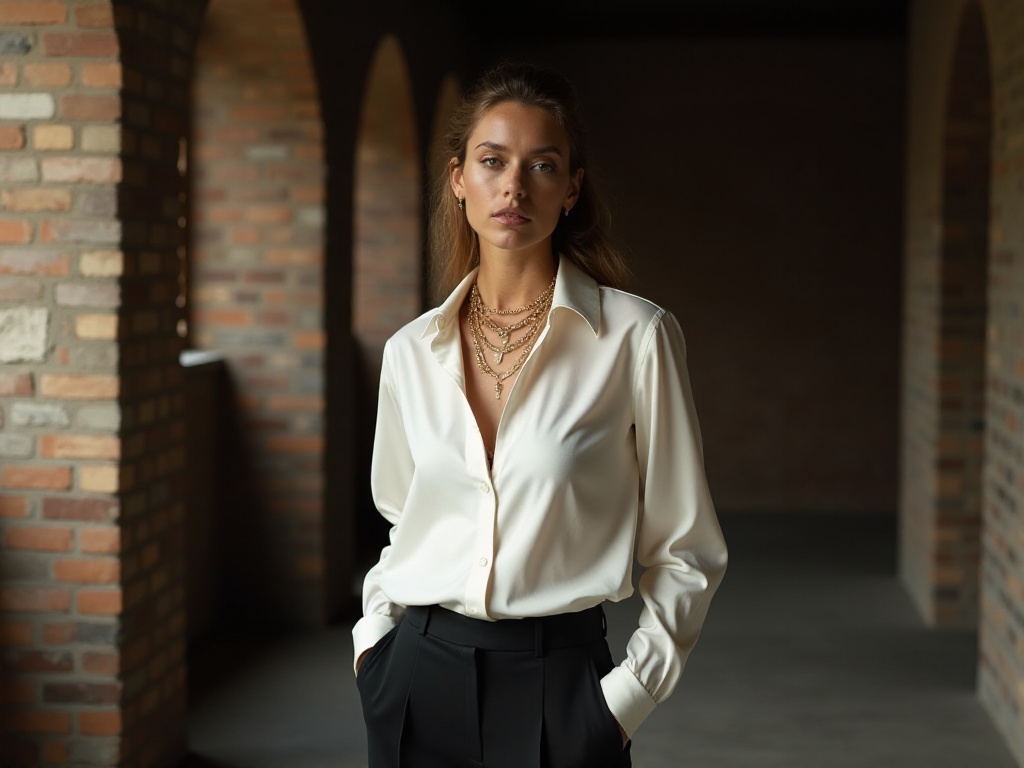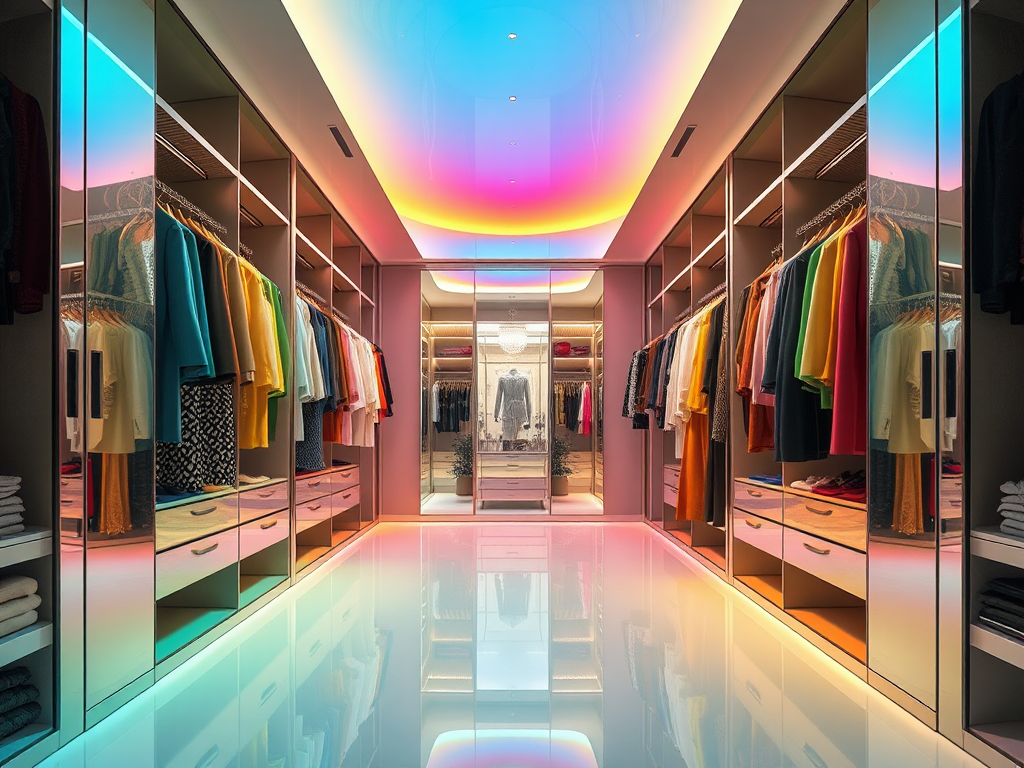Introduction
Do you often stand helpless in front of your closet? Or feel like nothing looks good enough on you? Trust me, it's not your fault. As a fashion blogger who has been through ups and downs for years, I deeply understand that finding your own style is far more important than blindly following trends. In this age of information overload, with fashion advice coming from all directions, finding yourself in the complex world of fashion has become a challenge everyone must face.
Fashion is not just an attitude towards life, but also a form of self-expression. When we talk about personal style, we're not just discussing how to match clothes, but exploring how to express inner qualities through external appearance. Today, let me share how to create a truly suitable personal style in this rapidly changing era.
Style Awakening
Fashion is not simply about imitating others. I remember when I first started as a fashion blogger, I always bought whatever was trending that season. The result? Either I felt uncomfortable wearing them, or they ended up collecting dust in my closet. Back then, I was like someone lost in someone else's story. Later I realized that true fashion should radiate from within.
Every person is unique, with different lifestyles and aesthetic preferences. To find your style, you first need to do some deep self-exploration. Ask yourself: What kind of occasions do you prefer? Lively parties or quiet cafes? What role do you play in life? Corporate professional or freelancer? What colors do you like? Steady dark tones or bright vibrant ones? What fabrics do you have a special fondness for? Crisp cotton and linen, or soft knitwear?
The answers to these questions are the foundation of your personal style. For instance, if you're a professional who frequently attends business occasions, your wardrobe should focus on formal wear, choosing items with structured fabrics and clean cuts. If you're a creative worker, you can add some design-focused pieces to your basics to show your artistic temperament.
Self-awareness is the first step in style development. I suggest taking a week to record your daily clothing choices and emotional responses. Such records can help you better understand your clothing preferences and lifestyle needs. Meanwhile, pay attention to the style characteristics of fashion influencers or celebrities you admire, but remember, admiration doesn't mean copying - it's about drawing inspiration and incorporating it into your own style.
Don't be afraid to make mistakes while exploring your personal style. Every attempt, whether successful or not, is valuable experience. I went through a "dark history" period where I tried all sorts of exaggerated looks. Though it seems somewhat amusing now, it was these experiments that helped me better understand what truly suits me.
Wardrobe Revolution
The first step in establishing personal style is to thoroughly clean out your closet. This isn't just a physical organization, but an opportunity for self-examination. I suggest taking out all your clothes and dividing them into three categories: frequently worn, occasionally worn, and worn less than once a year.
During the organization process, pay special attention to the clothes you wear most often. These frequently appearing items often reflect your true clothing preferences. For example, if you find yourself particularly fond of wearing certain colors or brands, it's likely because these items best match your aesthetic and comfort requirements.
A practical wardrobe should be like a carefully planned musical composition, where every note has its value. Based on my years of experience, an ideal wardrobe composition looks like this:
Basic items should make up 40%. This includes versatile pieces like white T-shirts, jeans, white shirts, black dress pants, etc. These clothes are like the subject, verb, and object of a sentence - they're the framework of outfit combinations. Though they seem ordinary, they're the foundation of the entire wardrobe. When choosing these items, pay special attention to fit and fabric quality, as they'll be used most frequently.
Statement pieces should account for 30%. These are items that reflect your personality, perhaps a unique jacket or a distinctive dress. Such pieces often enhance the overall look, but when choosing them, consider how well they match with basics. For example, if you choose a vibrant printed jacket, it's best to pair it with solid-colored basics for balance.
Accessories should make up about 20%. This includes bags, jewelry, scarves, hats, etc. These small items are like modifiers that complete the overall look. Choose accessories based on your life scenarios - if you travel frequently, prepare some versatile bags; if your work environment is formal, stock up on elegant jewelry.
Special occasion wear should be 10%. This includes formal wear, evening dresses, etc. Though not frequently worn, they're essential for important occasions. When choosing these clothes, invest in classic styles that can handle various occasions without quickly going out of style.
When conducting a wardrobe revolution, also note the following points:
First, establish a reasonable elimination system. If you haven't worn something for a year, what's the point of keeping it? Unless it has special sentimental value, consider giving it away or donating it.
Second, pay attention to clothing care. A good piece of clothing, with proper care, can last many years. Invest in good hangers, avoid wire hangers; regularly clean and air out clothes; choose appropriate washing methods based on fabric type.
Finally, establish an effective storage system. Organize by color, type, or occasion - this not only makes your closet look neater but also improves outfit coordination efficiency.
Practical Techniques
After all this theory, let's look at practical implementation. Coordinating clothes is like playing a fashion puzzle game - master the right methods, and you can easily handle various occasions. Here are some practical styling tips I've summarized:
Color coordination is the most basic and important technique. Choose 2-3 main colors as your signature palette. These colors should suit your skin tone and personality while meeting practical styling needs. For example, I particularly like combining camel, off-white, and navy - this combination never fails. When choosing colors, refer to color wheel theory: analogous colors create harmony, while contrasting colors make more striking combinations.
Fit selection should be based on your body type. Understand your body's advantages and areas you want to conceal, then choose the most suitable styles. For instance, if you're over 170cm tall, straight-leg wide pants can showcase long legs; if you're on the slim side, layering can be interesting, creating dimension through multiple layers. Additionally, different occasions require different fits - work settings suit tailored cuts, while casual occasions allow for more comfortable, loose styles.
Fabric matching is also an important consideration. Different texture combinations create interesting effects. A silk shirt with rough denim creates an elegant yet casual feel; a soft knit with a structured blazer shows both intelligence and gentleness. When choosing fabrics, also consider seasonality - spring and summer suit light, breathable fabrics, while fall and winter need warmer materials.
Accessory selection should follow the principle of "finishing touch." A simple solid-color dress paired with a designer belt instantly elevates the overall look's sophistication. When choosing accessories, note the following: first, accessories should coordinate with the overall style; second, keep the quantity moderate, avoiding excess; finally, accessory size should match body proportions.
Overall look completeness is crucial. A complete look includes every detail from head to toe - hairstyle, makeup, bags, and shoes should all be considered together. For example, if you choose minimalist professional wear, enhance the overall effect with a polished hairstyle and appropriate makeup; for casual looks, choose interesting accessories to add vitality.
Investment Advice
Investment in clothing requires strategy. Smart investment not only makes your wardrobe more practical but also saves money in the long run. Here are my specific suggestions:
Choosing mid-range brands for basics is the wisest choice. Brands like Uniqlo and ZARA are suitable, offering good value for money and basic enough styles. These items need frequent updating, so there's no need to invest too much. When choosing basics, pay special attention to fabric quality and construction details, as these affect wear experience and longevity.
Investing in coats and shoes is essential. These two categories best reflect quality and can most elevate overall look quality. A good coat can be worn for many years, providing both warmth and presence. When choosing coats, check if the fit is good, the fabric is structured, and the stitching is precise. Shoes are the foundation of the overall look - quality leather shoes not only provide comfort but can elevate the entire outfit several notches.
Accessory investment can be adjusted according to budget. If budget allows, choose some classic bags - these often hold their value and are versatile and durable. If budget is limited, choose some design-focused small accessories - clever matching can still achieve an eye-catching effect.
When investing, also note:
First, be planned. Make a shopping list each quarter to avoid impulse purchases. Before shopping, check existing clothes to see if new items are truly needed.
Second, focus on value for money. Expensive isn't necessarily best - choose based on actual needs and budget. Sometimes items from affordable brands, when properly styled, can look high-end.
Finally, consider value retention. Some classic pieces, though requiring larger initial investment, last longer and are more economical in the long run.
Personal Insights
After years of exploration, my biggest realization is: fashion isn't about following trends, but finding the most suitable way to express yourself. Like everyone has their unique signature, your clothing style should convey your personality.
In pursuing personal style, I've experienced many trials and errors. Sometimes I chose unsuitable items just to follow trends, resulting in discomfort and wasted money. These experiences taught me that true fashion must be built on self-understanding.
Fashion is an evolving process. As we age and our environments change, our clothing style naturally changes too. The important thing is maintaining an open and inclusive attitude, without setting limits. Sometimes bold attempts can bring unexpected pleasant surprises.
Confidence is crucial in this process. Don't overly concern yourself with others' opinions, because true fashion comes from within. When you're comfortable and confident in what you're wearing, you naturally radiate charm.
Remember, no one is born knowing how to coordinate outfits. It's a process of continuous trial and adjustment. The key is maintaining an open and curious attitude, being brave enough to try new possibilities. Meanwhile, learn to summarize experiences and find the most suitable matching methods for yourself.
Future Outlook
Fashion changes constantly, but style is permanent. With the rise of sustainable fashion, we may need to rethink our consumption habits. Establishing a streamlined but high-quality wardrobe not only makes your styling more efficient but also contributes to environmental protection.
Future fashion trends may emphasize more personalization and sustainability. This means we need to approach fashion consumption more rationally, choosing items that truly suit us and can be worn long-term. Meanwhile, pay attention to clothing's environmental properties, choosing brands that use eco-friendly materials or sustainable production methods.
In this age of information overload, maintaining uniqueness becomes increasingly important. Through clothing and styling, we can showcase our taste and attitude, conveying our life philosophy. Fashion isn't just about external decoration, but a lifestyle choice.
Finally, I want to say that finding your own style is a joyful thing. When you wear clothes you like and walk down the street, it's like presenting your best self to the world. Everyone is unique and should have their own style language. I hope everyone can find their unique charm and be themselves in the fashion world.
Are you satisfied with your current clothing style? Have you encountered any particularly tricky matching problems? Let's continue exploring together on this fashion journey and find the most suitable way of expression for ourselves.
Related articles




